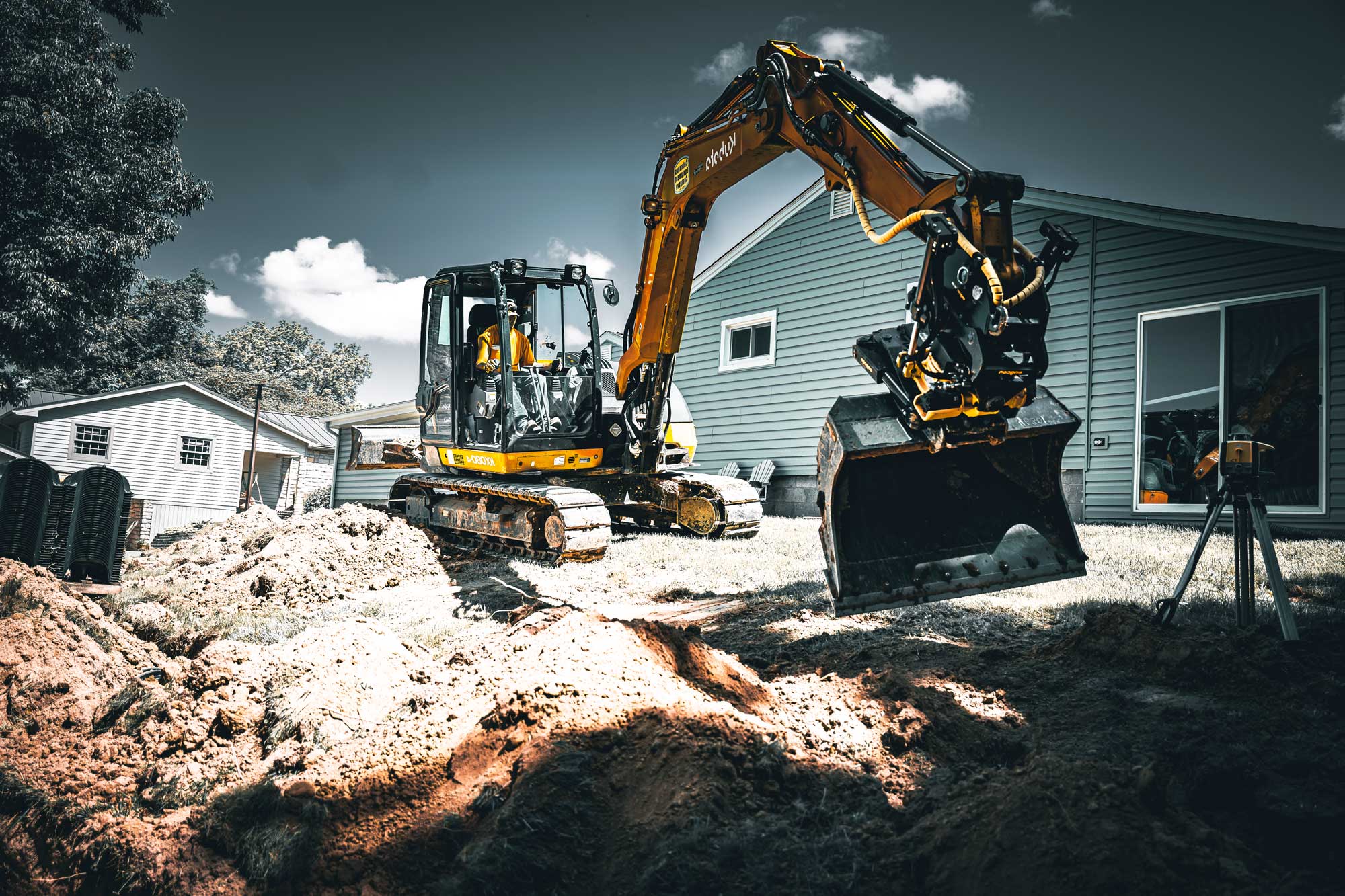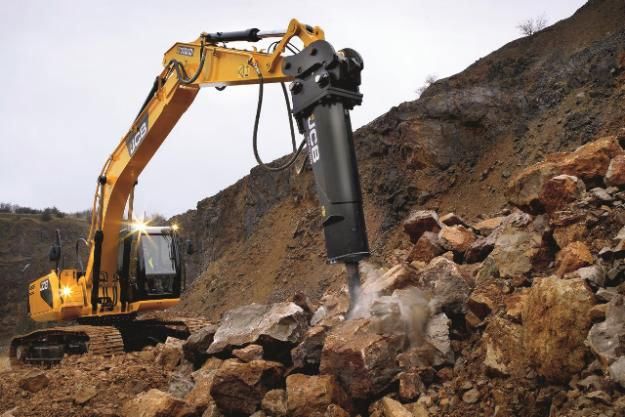Cost Effective Lancaster Excavation - High Quality Excavation at Competitive Costs
Cost Effective Lancaster Excavation - High Quality Excavation at Competitive Costs
Blog Article
Unveiling the Art of Excavation: Pro Tips for Safe and Efficient Excavating
In the world of excavation, the mastery of efficient and risk-free excavating is an art type that requires accuracy, adherence, and knowledge to well-known techniques. As soil is turned and earth is relocated, the details of excavation reveal themselves, demanding an eager understanding of tools, soil structure, safety and security protocols, and ecological factors to consider. The know-how required to browse these components successfully can mean the distinction between a successful excavation job and a prospective disaster. By unraveling the layers of this detailed procedure, a world of understandings and approaches awaits those seeking to raise their excavation abilities to new elevations.
Significance of Correct Devices
To make sure the safety and efficiency of any excavation job, using the suitable equipment is paramount. The right devices not only boost efficiency yet additionally alleviate dangers associated with excavating. Excavation jobs vary in extent and complexity, ranging from small residential landscape design work to large construction tasks. No matter the task dimension, having the correct devices can make a considerable distinction in the result.
These functional machines come in numerous dimensions to suit various project demands. Tiny excavators are ideal for smaller tasks, while bigger excavators tackle much more extensive projects successfully.
In addition to excavators, other crucial tools includes dump plates, vehicles, and excavators. Discard trucks are vital for getting rid of and delivering excavated materials, while trenchers are used for digging deep and slim trenches. Excavators excel in tasks that require pushing huge amounts of soil or debris. By spending in the suitable devices, excavation jobs can be finished securely, in a timely manner, and with precision.
Comprehending Dirt Structure
A detailed understanding of soil make-up is fundamental for carrying out excavation tasks with precision and safety. Comprehending the various kinds of dirt is important as it straight influences excavation approaches, equipment selection, and general job performance. Dirt composition usually contains 4 major parts: sand, silt, clay, and raw material. Each component has distinct residential or commercial properties that influence exactly how dirt responds to excavation procedures.
Sand fragments are the largest and supply great water drainage but provide little cohesion. Silt fragments are smaller than sand however bigger than clay, providing moderate water drainage and communication. Clay bits are the smallest and provide high cohesion but poor water drainage. Organic issue, such as decomposing plant product, impacts dirt fertility and stability.
Before beginning excavation, conducting soil tests to identify its make-up and attributes is vital. This information helps in selecting the ideal equipment, carrying out precaution, and establishing excavation techniques customized to the particular dirt problems - septic ohio. By comprehending dirt structure, excavation professionals can improve task results while ensuring security look at here and adherence to best techniques
Precaution and Protocols
Understanding dirt make-up is the foundation whereupon safety and security steps and procedures for excavation jobs are built, making certain the well-being of employees and the success of the endeavor. There are numerous crucial steps that must be implemented to reduce threats and prevent crashes. when it comes to safety and security throughout excavation.
First and primary, prior to any type of digging starts, a detailed evaluation of the website need to be carried out to determine any type of potential hazards such click to investigate as below ground utilities, unpredictable dirt problems, or nearby structures that might pose a risk. It is essential to have a qualified person oversee the excavation procedure to ensure that all safety and security methods are complied with purely.
Furthermore, all workers involved in the excavation should be properly trained in risk-free excavating techniques and the correct procedure of tools. By sticking to these security steps and protocols, excavation projects can be finished successfully and without event.
Reliable Excavation Planning
When beginning on an excavation job, careful preparation is important to ensure efficiency, safety, and effective outcomes. Reliable excavation planning entails numerous vital actions that are essential for the smooth implementation of the task.
Once the site evaluation is full, the following action is to develop a clear timeline and timetable for the excavation activities. This consists of figuring out the sequence of tasks, equipment requirements, and manpower appropriation. Correct organizing aids stay clear of delays and makes sure that the job stays on track.

Moreover, communication among all staff member is extremely important during the preparation stage. Clear instructions, routine updates, and reliable sychronisation are necessary for an effective excavation task. By investing effort and time in thorough preparation, excavation groups can significantly boost performance, reduce risks, and accomplish successful outcomes.

Managing Ecological Factors To Consider
With boosting emphasis on environmental sustainability in building methods, taking care of ecological considerations has actually come to be a crucial facet of excavation tasks. Excavation tasks have the potential to impact the surrounding atmosphere with soil disintegration, sediment drainage, environment interruption, and contamination of water resources. To mitigate these dangers, it is necessary to implement finest practices that focus on environmental security.

Additionally, correct waste monitoring is essential to stop dirt and water contamination. Implementing procedures for the disposal of dangerous products, recycling of waste products, and minimizing making use of damaging chemicals can dramatically decrease the environmental effect of excavation jobs. By incorporating these techniques right into excavation planning and implementation, building and construction business can make certain that their tasks are not just secure and effective yet also ecologically accountable.
Conclusion
Finally, understanding the art of excavation calls for a detailed understanding of correct devices, soil make-up, precaution, and reliable preparation. By adhering to these standards and considering environmental factors, excavations can be performed securely and effectively. It is critical to prioritize safety and security and efficiency in every digging task to guarantee effective results.
As dirt is turned and planet is moved, the intricacies of excavation expose themselves, demanding an eager understanding of equipment, dirt composition, security protocols, and ecological considerations.To make sure the safety and performance of any excavation task, making use of the proper tools is critical.A thorough grasp of dirt structure is fundamental for implementing excavation projects with precision and safety and security. Understanding the various kinds of soil is vital as it directly impacts excavation techniques, tools selection, and general task efficiency. By understanding dirt make-up, excavation experts can improve job results while guaranteeing safety and adherence to ideal techniques.
Report this page